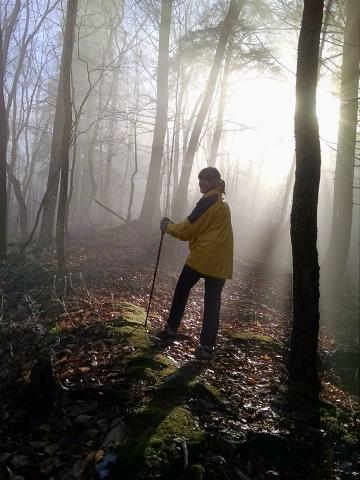Hope for the Wilderness
Dec 13,2015
Dead leaves still covered the ground as I walked along the Appalachian Trail in Norwich, Vermont during mid-December. Growing up I was accustomed to blankets of snow covering the barren grounds so thick that it would fill my snow boots at this time of year. Now however, due to global warming I didn't even need a winter coat to make it through the hike.
Though the absence of snow somewhat disturbed me, I took solace in some of the other features of the forested land surrounding me that most others would generally overlook. Nuts and leaves were scattered all over the grounds accompanied by several twigs and pinecones. What I found to be the most interesting though was that the trees circumferences (or DHB) were thin and narrow, not fat and wide. Ecologically, a wider DHB correlates with tree age and with so many young trees in one place I concluded that I stood in the middle of a young growth forest. Unlike a mature forest, young growth forest are still relatively new to the environment and have not been around very long.
While climate change continues to alter the seasons and fill my soul with a sense of impending doom, it is places like these young growth forests that still fill me with hope. Up along the trail I spied the ancient remains of stonewalls once used by colonial settlers for herding their sheep and cattle. Before this young growth forest had even come to be it was a farm; a clear-cut cultivated land used by our European ancestors who knew no better about respecting the sanctity of nature. Now after 200 years of abandonment the forest has regrown to claim it's roots from where it had once fallen to the greed of man.
Why do places like this fill me with hope during a time of global warming? It is because they serve as a reminder that the forests will one day grow back to claim what it rightfully theirs. The abandoned waste lands of today will regrow with all the lush greenery of a young forest two hundred years from now. Knowing how long it takes a forest to grow fills me and other conversationalists with a greater appreciation for the environment and inspires us to not only protect it but help it along the way.
Photo Credit: Eric Janson






